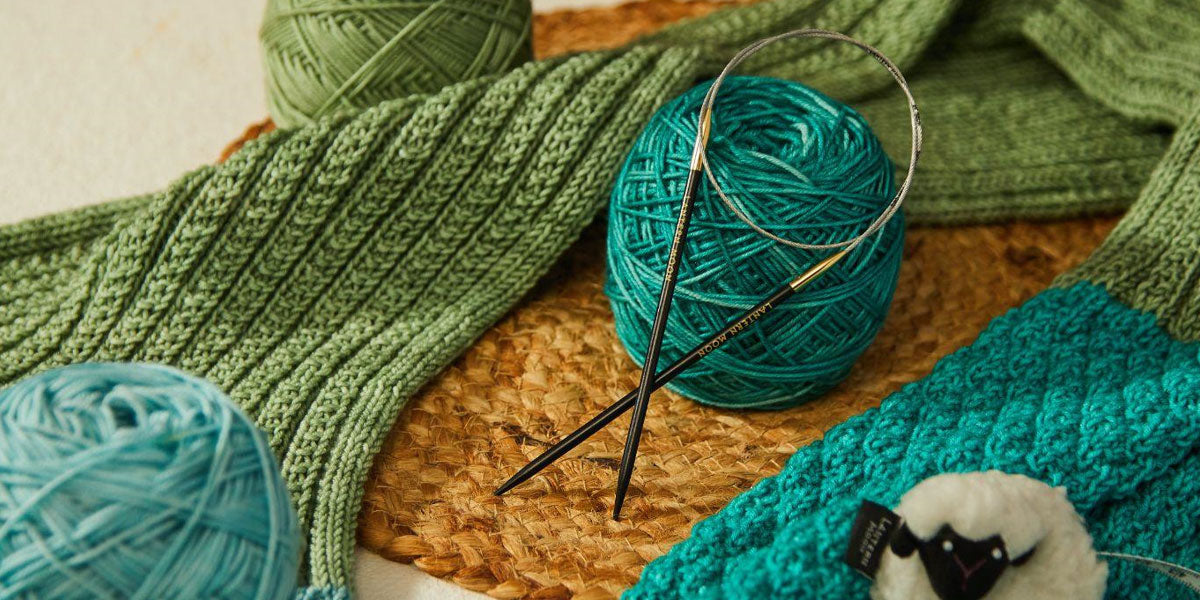
The knitting world is vast and there’s always something to learn and try. And, all you need is your favorite knitting needles. Knitting decreases are techniques that assist with the shape, fit, and design of the knitting projects.
Basically decreases means reducing the stitch count by one, two, or three in a row or round. From socks to hats and amazingly fitting sweaters to even unique shawls and scarves, you will find them handy in various knitting projects.
A very common decrease in knitting patterns is knit two together (K2Tog). A twist to this simple technique with enhanced effect is the knit two together through the back loop (K2Tog TBL). It works as an alternative to the knitting decrease plus it is also of great use to correct stitches after a mistake. So, if you are looking forward to expanding your knitting skills in this blog let’s take a look at knit two together through the back loop in detail.
What is Knit Two Together Through the Back Loop (K2TOG TBL) in knitting patterns?
In a knitting project when you are working on a row or round of knit stitches and have to reduce the stitch count, you basically work a decrease. It is common to find k2tog instruction but for enhanced effect, the pattern instructs to knit two together through back loop (k2tog tbl). The right-slanting knitting decrease works with any knitting needle, whether it’s a pair of single-pointed needles working on a scarf or anything flat, a set of four or five double-pointed needles (DPNs) used for knitting socks or circular knitting needles- fixed or interchangeable chosen for either knitting back and forth or in the round.
In knitting patterns, knit is abbreviated as “k”, 2 is for two stitches and TBL stands for "through the back loop" in either lower or upper case. Many patterns might include written instructions as "in the back of the stitch" or with a "-b" added to the stitch, such as K2Tog-b or K1-b. If there’s no mention of through the back loop but you want to experiment with a textured effect you can work this decrease technique instead.

How to Work K2Tog TBL
If you have the skills to knit two stitches together (k2Tog) and knit through back loop technique, you can easily go ahead with the knitting decrease. To perform this knitting decrease, you work the same as if you were knitting through the back loop of just one stitch, but instead, you go through two. If the knitting pattern instructs you can also work on knit three together through the back look (k3tog tbl), where you decrease three stitches into one.
Work the pattern as instructed till you get to the point of the knitting decrease. If you want to practice the stitch decrease then make a swatch of two or three rows of knit stitches.
Step 1 – Insert the right-hand knitting needle tip through the back loop of the first stitch, then the second.
Step 2 - Make a knit stitch as normal, pulling both loops off the left-hand needle.
Step 3 - One stitch will remain on the right-hand needle.
Once you are done, you will find that you have made a decrease with a neat right slant and an enhanced texture. If there’s a repeat in the next row or round, place a stitch marker.
Why Use K2Tog TBL Do?
The most common reason to use a K2Tog TBL is to give a twist to the decrease knit stitch which works for enhanced effect and a handy technique to untwist stitches.
Textured Effect – The knitting decrease creates a nice texture in the finished fabric. For example, if you are working on a twisted stockinette stitch pattern instead of k2tog you work a k2tog tbl.
Use the Back Loop to Untwist Dropped Stitches – Let’s think of a scenario when you are working on your pattern and you come across a twisted stitch. This can happen for many reasons including a dropped stitch which can be easily corrected with a repair hook. You can refer to our blog on how to fix a dropped stitch. While you're putting the stitches back on the needle, they might be more twisted. Rather than struggle to straighten them out, a K2Tog TBL automatically untwists the stitch while reducing the stitch count.
Alternative Decrease Stitches
K2TOG TBL is very specialized and you might not be using them often. So, it’s better to explore the alternatives.
SSK (Slip, Slip, Knit): The opposite of a K2Tog, the left-slating decrease is also used in knitting patterns. In a few occasions, you may be asked to SSK TBL.
P2Tog (Purl Two Together): Often worked on the purl row of a pattern, this is a very common decrease and it's easy to do. Similar to knit two together through back loop (K2TOG TBL), there’s purl two together through the back loop (P2TOG TBL), most often used to decrease and twist on purl rows.
Now with this guide get ready to include the knitting decrease of k2tog tbl in your projects. For smooth crafting sessions, high-quality tools are recommended. Explore the Lantern Moon Collection for ebony wood knitting needles that take pride in their liquid silk finish that assists with smooth stitching with all yarn types. Along with knitting needles, make sure to keep stitch markers, repair hooks, finishing needles, measuring tape (if you are designing on your own) and storage for your yarn and tools.
